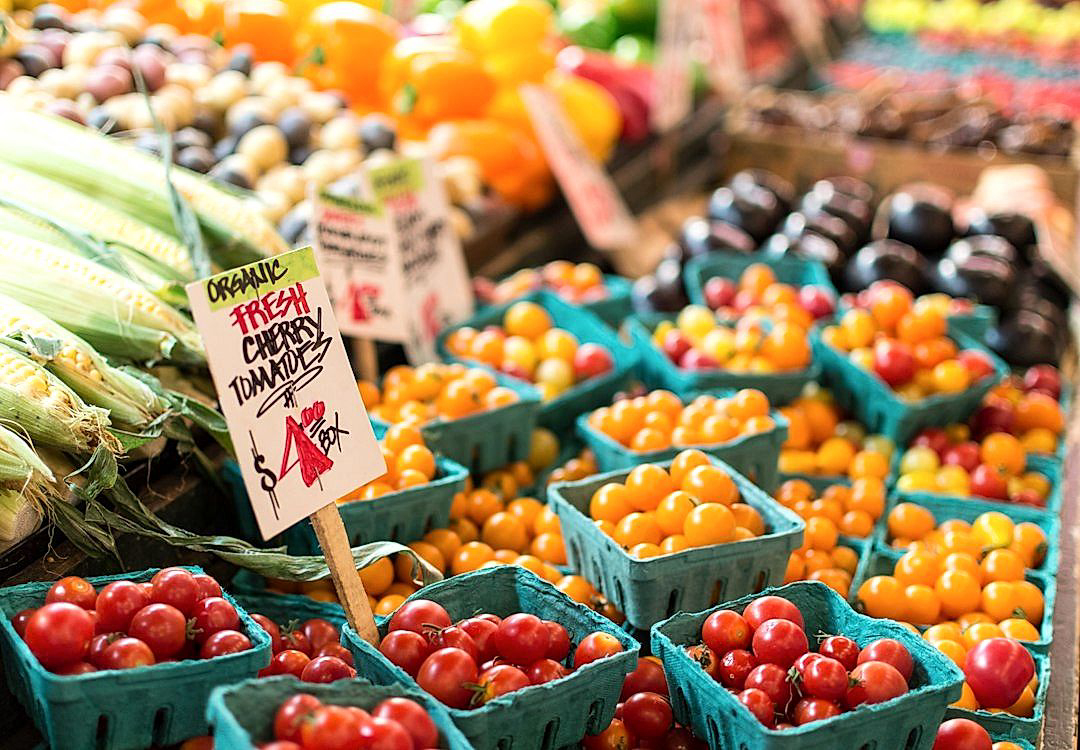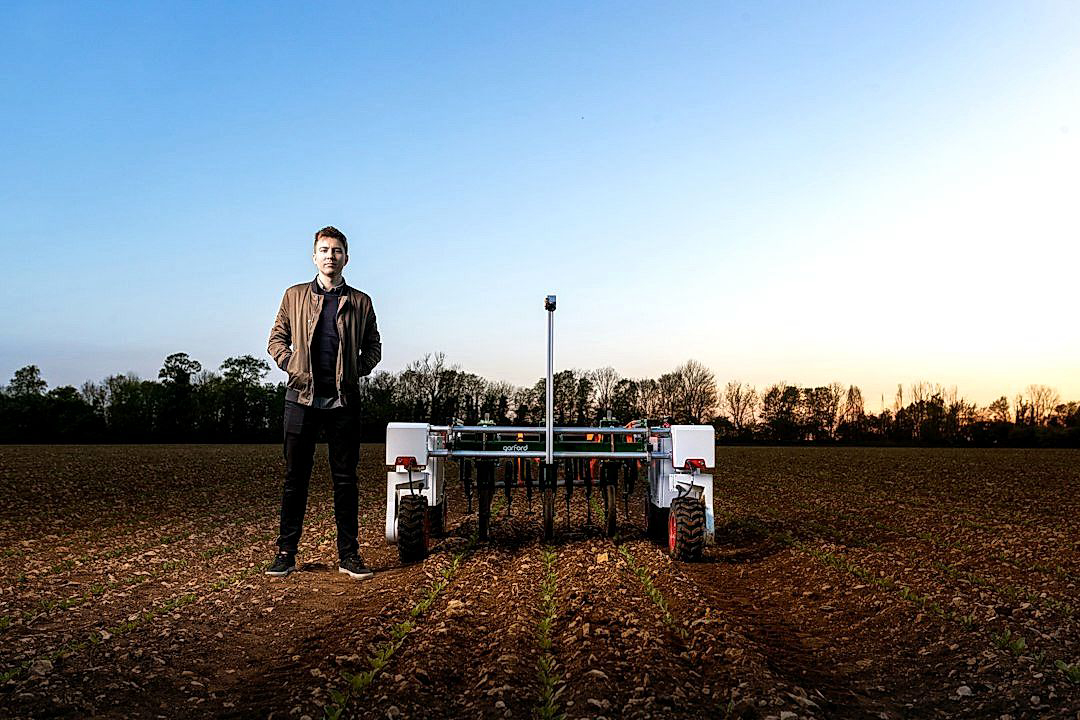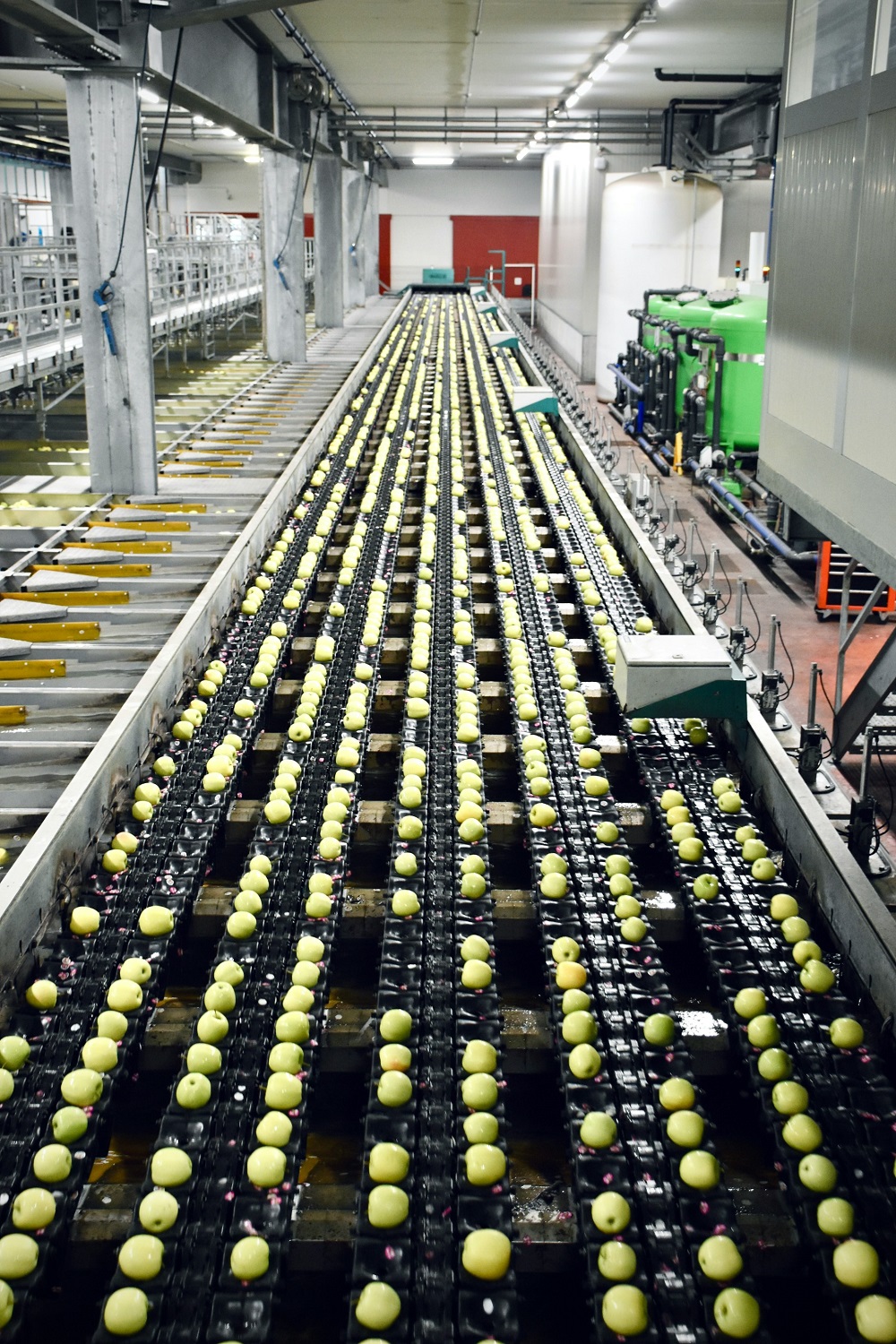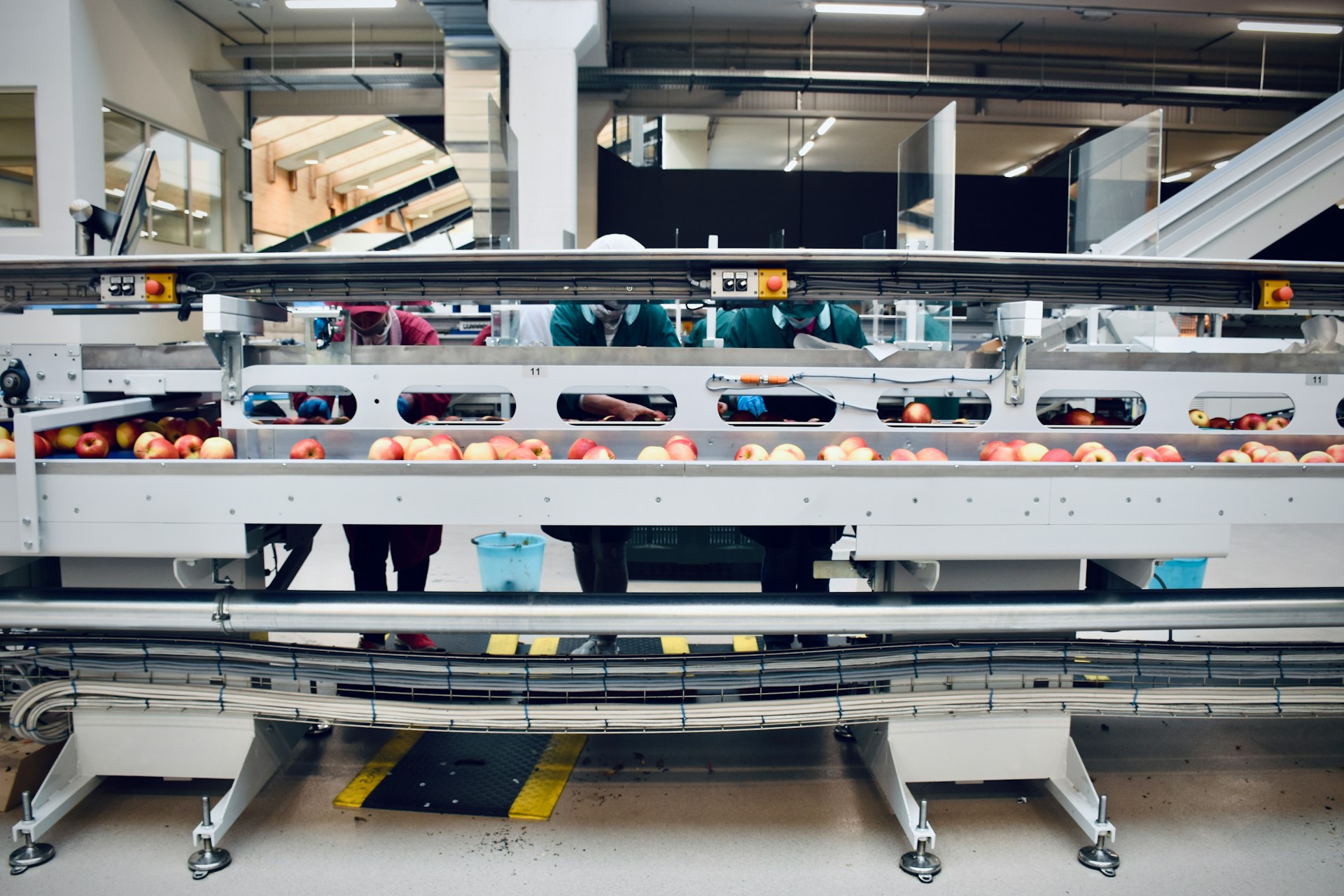The expanding interest in sustainability is reaching far corners of various industrial sectors, one of which is produce processing.
As consumers increasingly prioritize environmental health in their purchasing choices, the need for greener alternatives has never been more pressing.
In response to this growing demand, the agricultural sector is currently undergoing a significant shift.
Companies are exploring innovative techniques to reduce the ecological footprint while, concurrently, maintaining product quality and safety.
What’s more, these new technologies aim not only at environmental benefits but also at enhancing the efficiency of operations.
We will delve into some of these innovations stirring change in the produce processing industry.
Eco-friendly Innovations In Produce Processing
1. Solar-powered Fruit Drying Systems
In the realm of eco-friendly innovations in produce processing, solar-powered fruit drying systems present exceptional benefits.
This cutting-edge technology harnesses the energy of the sun to dry fruits, reducing the need for fossil fuels and detrimental energy practices.
Reducing the need for traditional energy sources not only decreases harmful emissions, but also significantly cuts operational costs.
The drying process, using the solar drying system, is efficient; it preserves more nutrients and the integrity of the fruit’s flavor compared to traditional methods.
These systems, owing to their solar power, operate even in remote or off-grid areas, extending their benefits to a broader range of producers.
Thus, the fruit drying systems help both large-scale and small rural farms to adopt sustainable practices in their processing operations.
This technology can be installed with varying capacity, enabling its use from large commercial operations to small, family-run businesses.
Apart from reducing harmful environmental impacts, the solar-powered fruit drying systems also reduce infrastructure costs as they eliminate the need for large-scale drying facilities.
The costs saved from using traditional energy methods can be allocated to enhance other aspects of produce processing, thus improving overall farm-to-table operations.
While there remains the initial investment and installation cost, the long-term benefits of the solar-powered drying systems often outweigh the initial expenses.
Many governments and non-governmental organizations are offering grants and subsidies to facilitate the adoption of this technology, easing the transition cost for many producers.
Though solar-powered drying systems are in their relative infancy, the success of initial implementations suggests vast potential for this technology to revolutionize the produce processing industry.
The increased interest from producers, combined with evidence of successful usage, indicates a promising future for this eco-friendly drying system in the quest for more sustainable agricultural practices.
As awareness and necessity for sustainable practices continue to rise, the demand for solar-powered fruit drying systems is expected to increase.
This innovation is a robust step towards the broader goal of achieving greener processing methods on a larger and global scale.
Today, the adoption of solar-powered fruit drying systems is a testament to the industry’s efforts in seeking ways to reduce their carbon footprint while enhancing their productivity.
Indeed, eco-friendly innovations such as this suggest a future where sustainability and efficiency coexist in harmony within the produce processing industry.
2. Water-efficient hydroponic farming
One of the most significant innovations in eco-friendly produce processing lies in the realm of hydroponic farming.
Used increasingly around the world, hydroponics is a method of growing plants without soil, instead utilizing mineral nutrient solutions in water.
This system of farming is noted for its water efficiency, using up to 90% less than traditional farming.
Importantly, hydroponic farming is not dependent on favourable weather and soil fertility, eliminating the risk of crop failure due to such factors.
In fact, it allows for year-round cultivation in controlled environments, leading to greater yields and reduction in the use of harmful pesticides and fertilizers.
Moreover, the system is space-efficient, enabling urban farming and the potential to reduce food miles significantly.
With hydroponics, things like temperature, light, and humidity can be controlled, allowing for optimal growth conditions and consistently high-quality produce.
Despite these benefits, however, the initial setup cost and energy use can be a barrier, this is where solar energy and other sustainable energy sources complements hydroponics.
Many hydroponic systems recirculate the water, ensuring minimal waste and maximal water efficiency.
Furthermore, such systems often use less space and produce higher crop yields than traditional farming methods, an important consideration in a world with an increasingly rapidly growing population.
The foods grown in hydroponic systems are just as healthy as those grown in soil, and sometimes, they’re even better.
Studies show that many hydroponically grown vegetables have a higher vitamin content than conventionally grown food, further advocating the merits of hydroponic farming.
Moreover, hydroponic farming reduces the danger of soil-borne diseases and pests, thereby reducing the need for harmful chemicals in food production.
In a world where water is becoming an increasingly scarce resource, hydroponic farming represents a significant step forward in water-conscientious agriculture.
Indeed, water-efficient hydroponic farming is setting the stage for a more eco-friendly future in produce processing, aiming for sustainability and efficiency at every stage of the process.
3. Electric-powered refrigeration transport
With the rising concerns about environmental conservation, electric-powered refrigeration transport has become a key player in eco-friendly innovations in produce processing.
Harvested crops need to be stored in cooled conditions during transportation to maintain their freshness, and electric-powered refrigeration becomes an indispensable tool in fulfilling this requirement.
All the while, this advanced technology significantly reduces carbon emissions, elements detrimental to the environment.
These electric-powered refrigeration units operate using rechargeable batteries rather than traditional cargo refrigeration methods that utilize diesel fuel.
This technology, in the long run, effectively saves energy, reduces operational costs, and curbs greenhouse gas emissions, making it a game-changer in the world of produce transport and processing.
The shift to clean energy by many industries is realizing more electric-powered refrigeration units being manufactured.
Every electric-powered refrigeration unit installed in a cargo vehicle implies one less diesel-powered unit emitting harmful greenhouse gases.
These units use refined temperature control systems, ensuring the precision of the temperature required for produce preservation.
It is also worth mentioning that electric-powered refrigeration transport ships raw produce to processing factories with minimal impact on the environment.
Moreover, the efficiency of these refrigeration units reduces the chances of produce spoilage, further minimizing waste.
It’s not only about environmental conservation; economic benefits are a significant driving factor to these refrigeration units as well.
They cut on fuel costs and require lower maintenance compared to traditional refrigeration units, which translates to cost savings.
By converting waste heat into electricity, these units even turn into generators, supplementing the energy supply of the vehicle, thus increasing its operational efficiency.
Lastly, the noise pollution that traditional diesel units’ produce is drastically reduced, leading to a quieter, cleaner, and more efficient mode of produce transportation.
Overall, electric-powered refrigeration transport is a remarkable innovation that is contributing significantly to a greener and sustainable way of produce processing and transport.
4. Biodegradable Packaging Materials
As the world shifts towards sustainable living and eco-friendly alternatives, there is an increasing attention towards biodegradable packaging materials in the produce processing industry.
Unlike the traditional packaging options, these materials pose minimal threat to the ecosystem as they can be broken down by natural factors.
Biodegradable packaging, which includes materials like bioplastics, mushroom packaging, and bagasse packaging, is a significant aspect of sustainable produce processing.
The initiative towards using biodegradable packaging not only reduces environmental harm, but also resonates with the growing consumer demand for sustainability.
This consumer consciousness for sustainability is inspiring companies in the produce processing industry to explore biodegradable options.
Research and development in this field have led to the creation of innovative materials like plant-based plastics and other biodegradable materials that are compostable and recyclable.
For example, packaging made from bagasse – a byproduct of sugarcane processing, is completely compostable,
giving it an edge over traditional plastic packaging, which takes hundreds of years to decompose and leaves harmful residues.
Furthermore, advanced technologies are being implemented to ensure that packaging materials decompose within a very short period.
Simultaneously, efforts are being made to improve the design and performance of these packaging products.
This not only includes the packaging’s shelf life or storage performance, but also its aesthetic appeal.
The transition towards biodegradable packaging is a notable effort in the produce processing industry that has the potential to significantly reduce carbon footprint.
Despite the challenges, implementing these options is a worthy investment for the industry’s responsibility towards sustainable growth.
Furthermore, the produce processing companies can demonstrate their commitment to sustainability while meeting the increasing consumer demand for environmentally-conscious products.
The trends in biodegradable packaging are indeed remarkable and are a testament to the innovative solutions brought by eco-friendly considerations in produce processing.
5. Organic Pest Control Methods
In the realm of agricultural advancements, organic pest control methods have emerged as a critical eco-friendly innovation for produce processing.
Decreasing dependence on harmful chemical pesticides, farmers are turning to natural alternatives to protect their crops from pests.
Organic pest control methods not only foster healthier soil, flora, and fauna, but they also reduce pollution by minimizing harmful chemical run-off.
These innovative organic pest control methods represent a significant shift in how we protect crops, encouraging a healthier and more sustainable agricultural environment.
Integrated Pest Management (IPM), one key method of organic pest control, embodies this holistic approach.
In IPM, pests are managed using a range of natural methods, such as biological control, habitat manipulation, and modification of cultural practices.
Another effective organic pest control method is the use of beneficial insects, which are natural predators of harmful pests.
The introduction of ladybugs, predatory wasps, and nematodes helps control pests without adversely affecting the environment.
Using plant-derived pesticides is another organic pest control strategy.
Pesticides like pyrethrum, rotenone, and neem are derived from plants and seeds and emit less harmful residues.
Further, these plant-based pesticides are biodegradable and less likely to accumulate in soil and water bodies.
Another notable method is pheromone traps.
These traps use the natural chemicals emitted by pests to attract and trap them.
This method minimizes harm to non-target creatures and poses no threat to the environment.
Also, the use of crops engineered with pest-resistant genes is an organic method that enhances natural resistance to pests without damaging the environment.
Overall, organic pest control methods promise significant strides in making produce processing more eco-friendly.
6. Regenerative Agricultural Practices
The agricultural industry has long been a significant contributor to global greenhouse gas emissions, but there is a growing movement towards more sustainable and eco-friendly practices.
One such innovation is regenerative agriculture, which aims to enhance and replenish the health of soils, the primary resource upon which agriculture depends.
Regenerative agricultural practices not only benefit the environment, but they can also improve food production and quality, making them a win-win solution.
These practices involve a variety of methods, including cover cropping, crop rotation, and reduced tillage, all of which help to maintain soil health and boost crop yields.
Organic matter in the soil is increased through these methods, leading to enhanced carbon sequestration, which in turn reduces the amount of carbon dioxide in the atmosphere.
By taking carbon from the air and storing it in the soil, regenerative agriculture acts as a form of natural climate solution, fighting against global warming and climate change.
Regenerative agriculture also promotes biodiversity, which is critical for a healthy ecosystem and contributes to the resilience of farms against pests, diseases, and changes in climate.
More importantly, these practices improve the nutritional content of the food produced, because healthy soils produce nutrient-dense crops.
Likewise, they also contribute to water preservation by improving soil structure, which increases the soil’s capacity to retain water.
This reduces the need for irrigation and makes the crops more resilient to droughts and floods.
Moreover, regenerative agricultural practices are economically beneficial for farmers as they reduce the need for expensive synthetic fertilizers and pesticides.
In addition, farms implementing these practices sometimes qualify for carbon credits, adding another income source for farmers.
In the light of its many benefits, globally renowned companies in the food industry are starting to invest and shift towards regenerative agricultural practices.
This is helping to create a market demand, encouraging more farmers to transition to these sustainable practices.
Ultimately, regenerative agriculture holds significant potential in transforming the agricultural industry into a carbon-negative sector rather than a carbon source.
It can effectively address several major environmental issues, from climate change to biodiversity loss, while also increasing the productivity and profitability of farming.
7. Waste-to-energy processing systems
The waste-to-energy processing systems represent a significant innovation in the eco-friendly produce processing industry.
They provide a solution for converting organic waste derived from produce processing into useful energy.
This technique not only mitigates the environmental impact of waste disposal but also contributes to the production of renewable energy.
There are different methods involved in the waste-to-energy process including anaerobic digestion, incineration, pyrolysis, and gasification.
Anaerobic digestion involves the break down of organic material by microorganisms in an oxygen-free environment, leading to the production of biogas which can be used for heating and electricity generation.
The method of incineration utilizes high temperatures to convert waste into gas, steam, and ash.
These gases and steam could be used to generate electricity, offering a profitable usage for organic waste.
Similarly, pyrolysis and gasification, although using heat like incineration, operate under different conditions, and result in the production of syngas- a gas mixture consisting mainly of hydrogen and carbon monoxide, and biochar- a solid product rich in carbon and can improve the soil.
These energy generation methods provide an efficient means of waste management, reducing the volume of the waste while extracting value in the form of energy.
Alongside energy generation, waste-to-energy processing systems can also contribute to the reduction of greenhouse gas emissions.
It does so by preventing the release of methane from organic waste decomposition and by replacing fossil fuels in energy generation.
Furthermore, such systems can serve as an effective way to recycle nutrients in the form of biochar or ash, which can be used to enrich the soil and improve crop production.
Though these systems can require significant capital investment, they can offer long-term economic benefits by reducing waste disposal costs and generating income from energy production.
Moreover, with continuing advancements in technology, waste-to-energy systems are becoming increasingly efficient and more affordable, making them a viable option for a wide range of produce processing applications.
Incorporating waste-to-energy processing systems in the produce industry thus represents a step towards the creation of circular economy models, where waste is viewed not as an end product but as a valuable resource for continuous use.
The Bottom Line
Our planet’s survival lies heavily on sustainable practices and innovative developments in various sectors, especially agriculture.
Adopting solar-powered fruit drying systems, water-efficient hydroponic farming, and electric-powered refrigeration transport can fundamentally reshape the way we produce and distribute food.
Furthermore, the widespread use of biodegradable packaging materials and organic pest control methods significantly reduces harmful environmental impacts.
Implementing regenerative agricultural practices not only improves biodiversity but also enhances soil health and resilience.
Lastly, waste-to-energy processing systems present a robust solution to manage and recycle waste effectively into useful energy for our consumption.
Together, these sustainable developments offer a promising avenue for a greener and more sustainable future where both agriculture and the environment can thrive.




